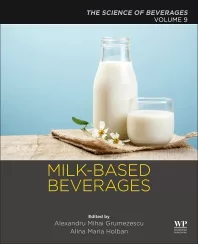New products blur the category lines
IRI’s New Product Pacesetters hit on key consumer trends
Taking into account outside elements like economic challenges, environmental hurdles and trepidatious consumers, consumer packaged goods (CPG) manufacturers have a number of things to consider when it comes to developing new products.
“As we think about successful innovation and what will really deliver growth this year and beyond, it’s really around blurring of the eating occasions,” said Larry Levin, executive general manager of Information Resources Inc. (IRI), during the Chicago-based market research firm’s May webinar “2012 IRI New Product Pacesetters.”
Citing data from IRI’s “State of the Snack Industry” webinar, Levin explained that food and beverage snacking continues to escalate as consumers have gone from 2.1 snacking occasions in 2009 to nearly three now. “As marketers and retailers, we want to understand how [to] get on that bandwagon and make sure that when a consumer’s reaching for that extra snack, whether it’s at home or on the go, we’re there to help them,” he said.
Although snacking occasions have increased, consumers still have financial concerns for marketers to consider. Levin explained that 52 percent of consumers have made numerous cutbacks to save money within the last six months, according to IRI data; however, one-third still reported looking for new products to try. When it comes to selecting those new products, Levin added that value remains key. However, he explains that value doesn’t mean cheap; it means enhancing the consumer’s life.
According to IRI data, when it comes to new product consideration criteria, 45 percent of consumers reported looking for the lowest price compared with 41 percent who stated that they looked for competitively priced products. Satisfaction with the brand/manufacturer in the past, appeal to multiple people in the household, and “product allows me to ‘stretch’ usage” came in at 30, 26 and 25 percent, respectively.
Showcasing convenience
“What really matters, [and] we’ve talked about delivering value in many ways, it’s all around convenience,” Levin said. “Convenience is really one of the overarching parameters that we need to be thinking about as we position our products, but it’s also about that ability to have … cross-occasional food and beverage options, so a lot of opportunity for me to blend, if you will, snacking occasions.”
IRI Times & Trends Editor Susan Viamari explains that although convenience remains important in new product innovation, it has become ingrained in developments and is even a subset to other trends in the marketplace.
“Convenience has really become an expected, often secondary, attribute of successful packaged goods launches,” she says. “This year’s most powerful beverage launches of 2012 met the bar for convenience while also addressing other key trends. The increased prevalence of on-the-go eating has strengthened consumers’ desire for convenient and portable satiation.”
Multi-functional benefits
Functional benefits also have become a key factor in the CPG market. In the “2012 IRI New Product Pacesetters” webinar, Viamari noted that 15 percent of food and beverage new product pacesetters contained functional benefits, up from 11 percent in 2011. Notable functional benefits included high protein in 40 percent of pacesetters, antioxidants/disease prevention in 33 percent, and vitamin-/mineral-enriched in 27 percent, Viamari noted in the webinar. Energy and probiotics/enhanced intestinal support were present in 20 percent of pacesetters each, she said.
Within the beverage arena, Viamari highlights that some manufacturers have added protein to their products. WhiteWave Foods’ Silk Fruit & Protein or Campbell Soup Co.’s V8 V-Fusion Smoothie are examples of products that can tap into the health and wellness trend.
“More than two-thirds of consumers are trying to eat healthier today,” Viamari says. “This has definitely translated into the beverage arena, and manufacturers are answering the call for healthier beverage solutions.”
Bring it home
However, consumers’ desire for healthier alternatives does not eliminate the market for CPG products that can appeal to a convenient and indulgent treat.
“IRI’s ongoing MarketPulse survey series indicates that home-based treats, such as ‘coffeehouse’ coffee, are still very much a part of consumers’ smart indulgent behaviors,” Viamari explains. “This trend is helping to build the single-cup coffee wave that has been swelling for several years now. Starbucks K-Cups delivered the highest first-year sales of a K-Cup launch in 2012, proof that there is still life left in this trend.”
Some of the most successful beverage launches in 2012 addressed the trend of bringing indulgence into the home, she adds.
“Eating, drinking and entertaining in the home and taking food [and] beverages from the home rather than dining out remain very popular strategies for consumers looking to live well on tight budgets,” Viamari says. “But, even though consumers are dining/entertaining out less often, they still want to indulge.”
In addition to Starbucks K-Cups, Kraft Foods Group Inc.’s Gevalia brand offers coffeehouse indulgence without the expense, she explains. For the alcohol sector of the industry, Anheuser-Busch’s Bud Light Platinum beer and 14 Hands fruit-forward wine offer indulgent alternatives, she adds.
When looking at the most successful new products, a blurring of current trends seems to be the recipe for success within the CPG market.
“As we examined the average number of benefits offered by the most successful products during the past 15 years, there is a clear escalation,” Viamari says. “Consumers are expecting more — healthier and convenient, healthier and indulgent, etc. — and marketers are delivering.”
Looking for a reprint of this article?
From high-res PDFs to custom plaques, order your copy today!







